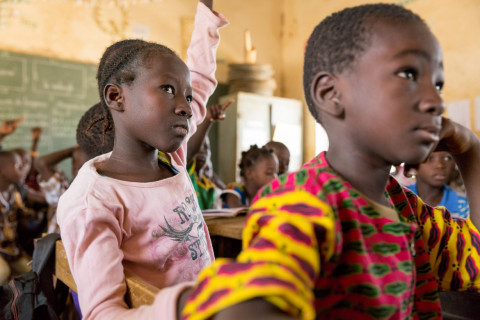
GCED Basic Search Form
Quick Search
Вы здесь
Новости

The Global Partnership for Education (GPE) released its Results Report 2019, which monitors the progress of the partnership against its goals and objectives as stated in GPE 2020, their 5-year strategy.
Top 6 findings on GPE’s goals
1. More children are completing basic education
An estimated 4.9 million more children completed primary school and 2.6 million more completed lower secondary school over the previous year. In countries affected by fragility and conflict, the primary completion rate is still lagging but showing progress.
2. The opportunity gaps between rich and poor children, and between rural and urban children, are large but narrowing
In countries affected by fragility and conflict, for example, 42 rural children completed lower secondary school for every 100 urban children in 2018, compared with 39 in 2017. In the same countries, 20 children from the poorest households completed lower secondary school for every 100 children from the richest households in 2018, compared with 18 in 2017.
3. GPE partner countries are building stronger systems to assess learning
48% of partner countries now have a learning assessment system that meets quality standards, compared with 40% in 2015. Building these systems is crucial to ensure that governments know what is working to improve learning, what is not, and where to direct resources.
4. Parity between girls and boys completing school is improving, but still elusive at the lower secondary level
The proportion of partner countries that are approaching equal numbers of girls and boys completing school rose to 67% for primary, and to 54% for lower secondary.
5. Many education systems face challenges in efficiency
Across 25 partner countries, more than a third of all education spending covers the costs of repetition and dropout. Moreover, teachers are often not distributed evenly within countries, resulting in certain regions being disadvantaged.
6. Countries affected by fragility and conflict face more acute challenges in multiple areas
Less than 70% of children complete primary school in partner countries affected by fragility and conflict, compared to nearly 77% in partner countries overall. Gender disparities, and especially girls’ disadvantage, are more pronounced in fragile countries. These countries are also much more likely to have larger class sizes, and less likely to have education plans that include strategies for overcoming constraints. Countries affected by fragility and conflict also face acute challenges to mobilize domestic resources for education.
Top 6 findings on GPE’s objectives
1.GPE partner countries are developing stronger education sector plans
100% of education sector plans of partner countries now meet quality standards, up from 58% in 2015. GPE support to plan quality during this time has included the Education Sector Plan Preparation and Appraisal Guidelines developed with UNESCO’s International Institute for Educational Planning, the education sector plan development grant, a new quality assurance process, and a GPE funding model requirement concerning the quality of the plan. Still, one-third of education sector plans, mostly those in countries affected by fragility and conflict, are rated as “not achievable,” meaning that they do not include sufficient analysis of the financial constraints and implementation challenges to overcome.
2. Local education groups are becoming more inclusive
59% of local education groups now involve teacher organizations, and 89% involve civil society organizations – up from 56% and 87% respectively in 2017. This means that the policy dialogue and sector planning process in many partner countries is more reflective of the views of all stakeholders.

3. GPE grants emphasize learning
As of June 2018, 40% of active implementation grants were allocated to activities that aim to improve learning, amounting to an investment of almost US$600 million. Of GPE’s three strategic goals, partner countries allocated the largest amount of grant funding to learning. In addition, 88% of implementation grants supported activities related to learning assessment.
4. GPE provides strong support to countries affected by fragility and conflict
As of June 2018, 65% of all active implementation grants were for countries affected by fragility and conflict, in line with GPE’s mission to focus on the most marginalized children. GPE provides a comprehensive suite of support to these countries, including three special funding mechanisms, and assistance with developing transitional education plans.
5. Monitoring of plan implementation can be improved
Monitoring of the implementation of education sector plans is poor. Fewer than half of partner countries organized a joint sector review in 2018, and just over a quarter of these reviews met quality standards.
6. More aligned and harmonized aid modalities are needed
While all GPE grants are aligned to national sector plans, two-thirds use stand-alone mechanisms that are poorly aligned with national systems. More aligned and harmonized modalities, both in GPE grants and in the financing and projects of donors who are GPE partners, would significantly increase GPE’s ability to contribute to successful education sector plan implementation, and thus system strengthening.
URL:
https://www.globalpartnership.org/blog/12-key-findings-gpes-results-report-2019
